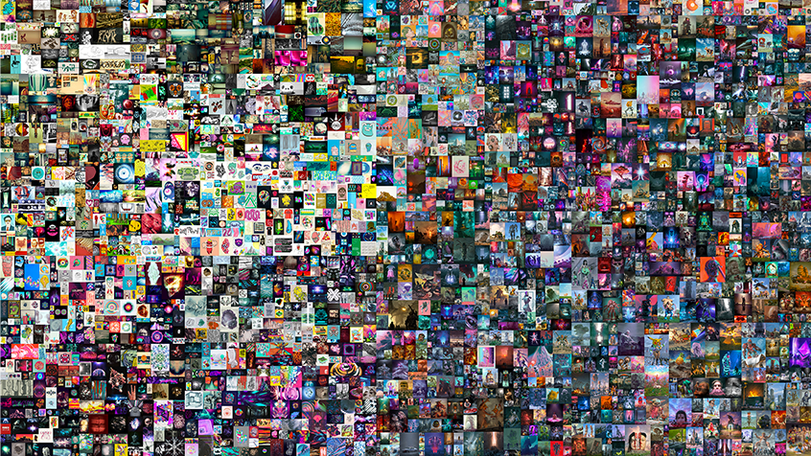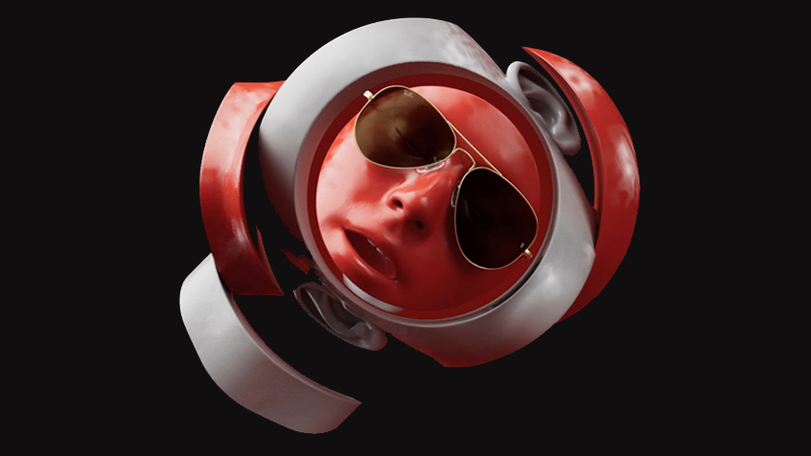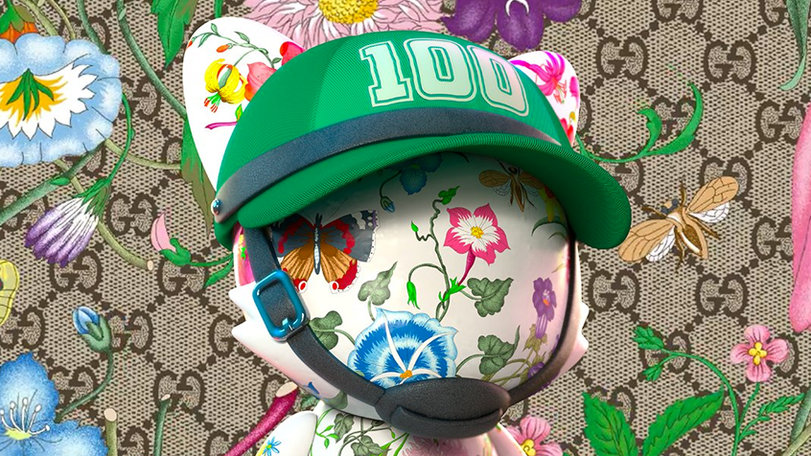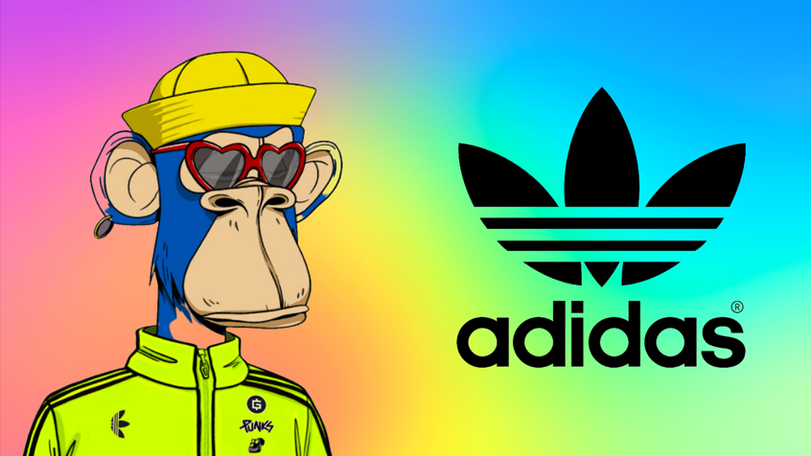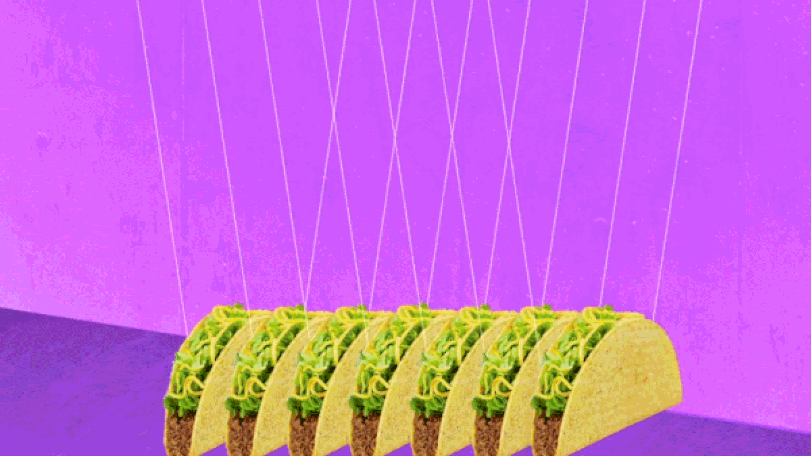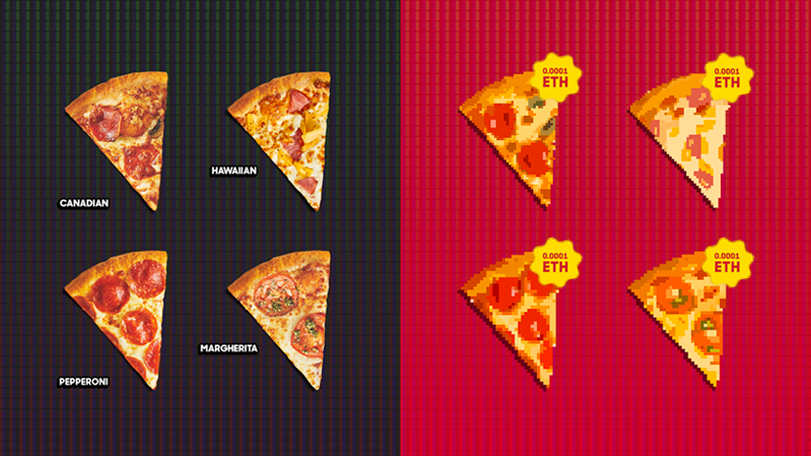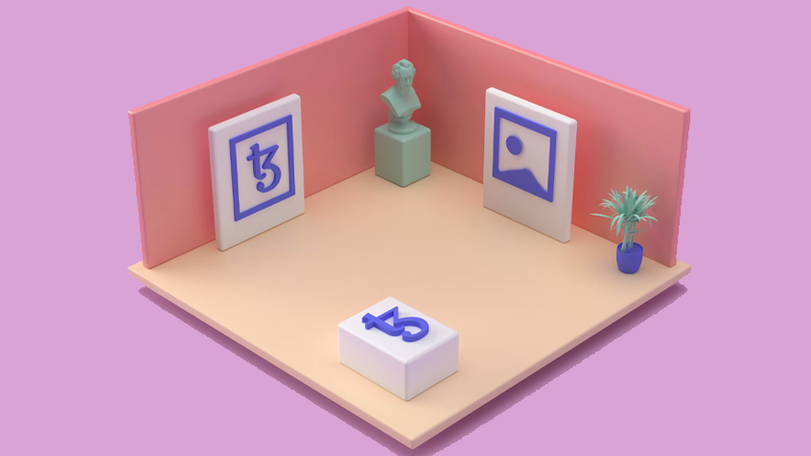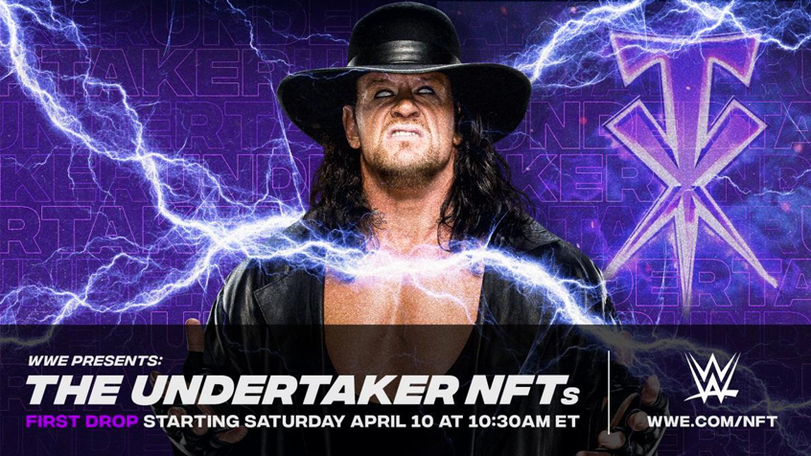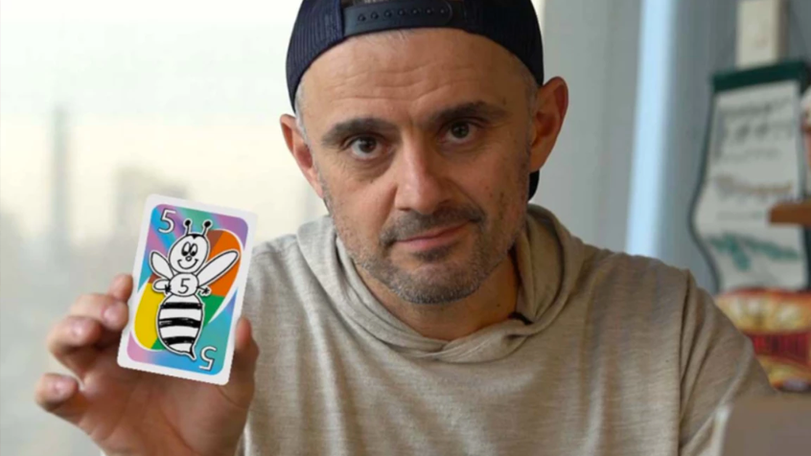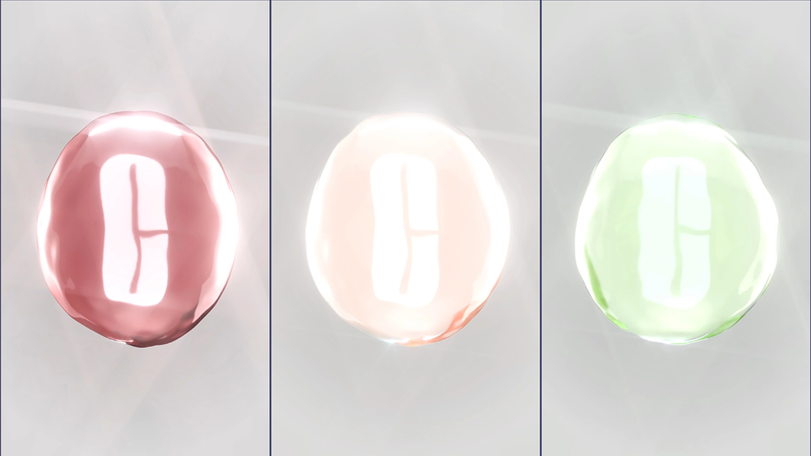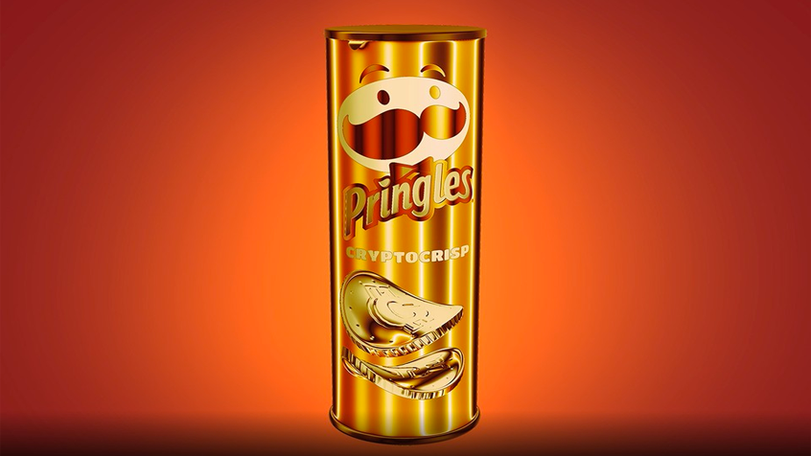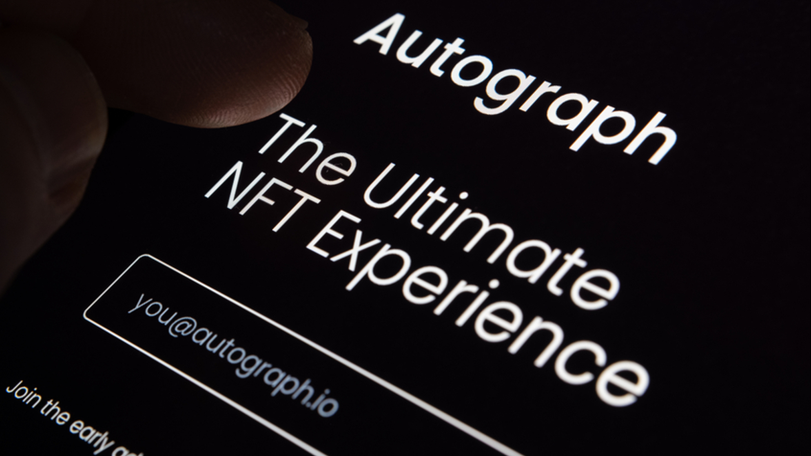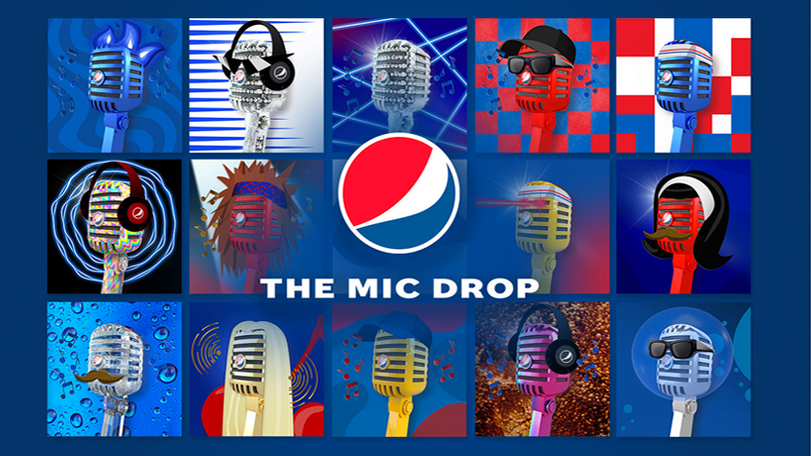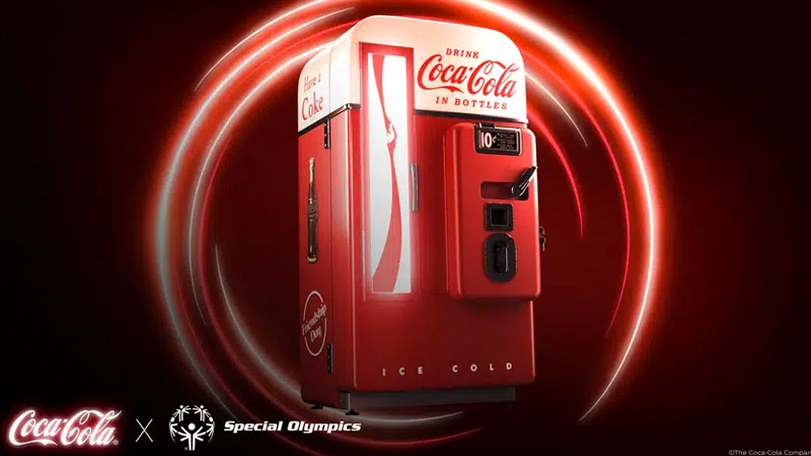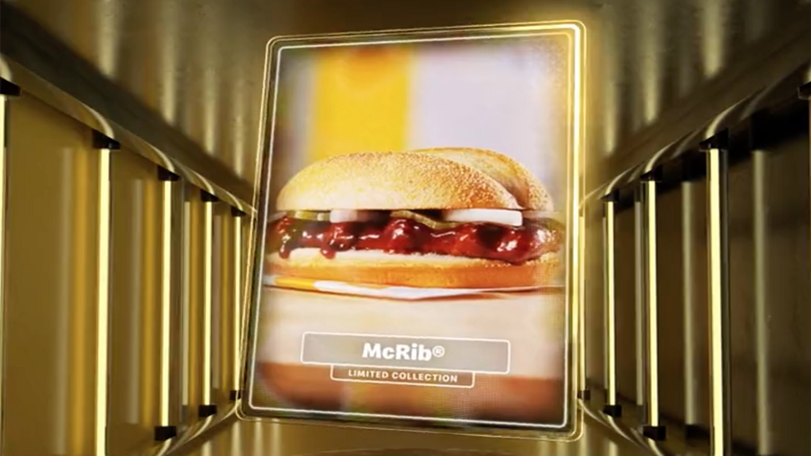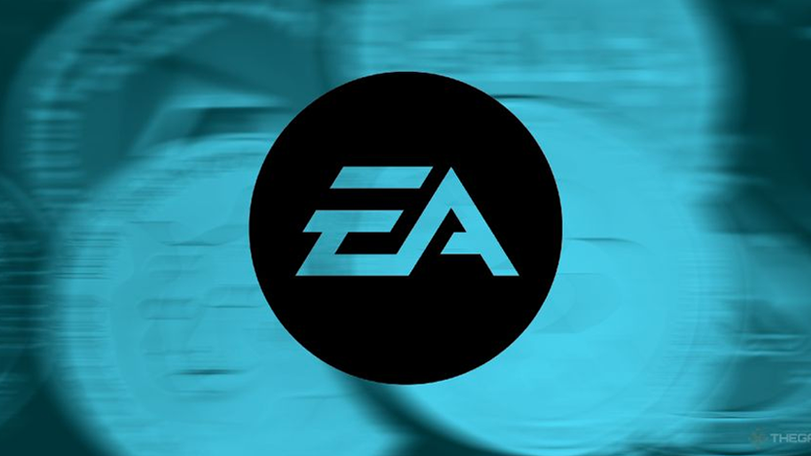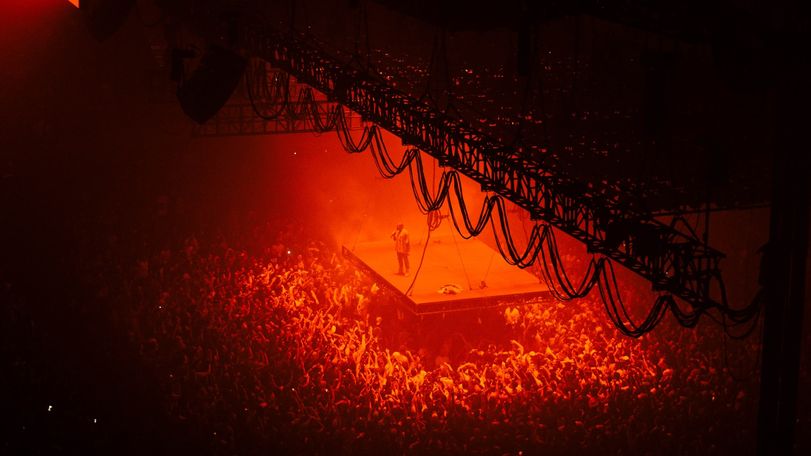
Brands and NFTs: A Marketers' Guide
A rundown of what some of the world's biggest brands are doing with NFTs today
24 February 2022
NFTs are everywhere. Big brands, small brands, sports brands, fast-food brands - every brand and its (robot) dog seem to be getting involved. Even Mark Ritson released some NFTs of himself sitting on the toilet (for perhaps the wrong reasons).
A certified part of popular culture, an array of NFT projects cropped up around what is arguably the most significant cultural event in the United States — the Super Bowl.
To start with American brewing company Anheuser-Busch InBev, one of the world’s largest and most profitable beverage companies, featured Noun glasses NFTs in its Bud Light Next ad.
Additionally, Kia turned the face of its Super Bowl ad, Robo Dog, into an NFT to raise money for The Petfinder Foundation, a non-profit organisation that gives grants to animal shelters and rescues.
The fast-food chain Buffalo Wings also announced it was selling three NFTs, dubbed “NF-OTs”, to honour the five-year anniversary of the only Super Bowl to have been decided in overtime (a.k.a. OT). That game—Super Bowl LI—saw the New England Patriots overcome a 25-point deficit to defeat the Atlanta Falcons in extra time.
In keeping with its history of attendees keeping their tickets as keepsakes, the NFL itself also gave every fan who attended a customised NFT Super Bowl ticket that listed their section, row, and seat.
Then there were the artists at the halftime show one of whom, Snoop Dogg, recently released his latest album as an NFT.
NFTs it seems then, aren’t going anywhere. The numbers speak for themselves - in 2020, the total sales volume of NFTs was just $94.9 million. In 2021, it reached over $23 billion.
But how are brands getting involved in this space? Perhaps more importantly, why? Creative Salon decided to round up some of the finest non-fungible tokens out there to date, placing them (loosely) into the themes that best characterise them.
The Power of Scarcity
Beeple — Everydays: The First 5000 Days
To begin, let’s look at the first purely digital NFT based artwork offered by a major auction house which sold for $69,346,250 last year, positioning the artist among the top three most valuable living artists.
While this is not a brand, this is the moment whereby NFTs entered the zeitgeist. The idea of scarcity is key here, and as readers will immediately notice is part and parcel of the NFT experience, which helps explain why so many luxury fashion brands are operating in this space.
Ray-Ban — Aviators
The designer sunglasses brand is setting its sights on being a big player in the metaverse in 2022 and beyond.
Not only is the brand collaborating with Meta (formerly Facebook) on Augmented Reality (AR) glasses, but in October last year it entered the NFT space, auctioning off its first and only NFT featuring the brand’s iconic Aviator sunglasses. Created by German artist Oliver Latta, renowned for his provocative 3D motion designs, the NFT was auctioned on OpenSea with the proceeds going to the Italian Art Trust.
Blending of Physical and Digital
Gucci x Superplastic — SuperGucci
Gucci launched a consisting of digital and physical keepsakes with Superplastic, a globally leading toy and digital collectible company.
The release consists of ten NFT artworks accompanied by a limited edition handmade ceramic sculpture made in Italy. The designs of each NFT are inspired by Gucci’s signature designs and patterns, reconstructed to the animated internet celebrities, Janky and Guggimon. Janky and Guggimon are virtual humans created by Superplastic, who exist in the digital world.
What is interesting in this instance however is not simply the element of scarcity, but that of the blending of the physical and virtual worlds — a cornerstone of the coming metaversal experience.
Adidas — Into the Metaverse
In the space of one afternoon, Adidas was able to make $22 million from sales of 30,000 NFTs. Adidas made the NFTs in partnership with Bored Ape Yacht Club, Punks Comics, and GMoney (a pseudonymous crypto enthusiast).
This selection shows the ability of virtual goods to interact with the physical realm. By buying one of these NFTs, owners are given access to special physical goods, such as a hoodie and the tracksuit worn by the Bored Ape that Adidas owns, and upcoming digital experiences.
Indeed, the blending of experiences is what the future metaverse will sit atop.
Customer Relationship Management
Adidas — Prada Re-source
However, showing just how new this space is, Adidas’ “Into The Metaverse" foray was launched pretty clumsily, with numerous fans unable to mint the collectibles. In response, Adidas allocated 500 spots to this group for the project’s waitlist for “Adidas for Prada re-source”: a digital art creation project that will allow fans to contribute to a tiled canvas that will eventually be minted into an NFT and sold at auction.
Another 1,000 spots were allocated for holders of the “Into The Metaverse” token, making good on the retailer’s promise of exclusive rewards. The final 1,500 spots will be allocated to the public.
This NFT works by offering a 15 per cent share of the final sale to be split among fans who contribute, with 80 per cent donated to non-profit Share Factory and the remaining 5 per cent to digital artist Zach Lieberman, who helped curate the design.
Gap — Frank Ape
Gap announced the global launch of its first collection of NFTs via a gamified digital experience celebrating creatives and giving customers the unique opportunity to own a limited edition collectible Gap hoodie.
In collaboration with Brandon Sines, the artist behind Frank Ape, the work was built on a more energy-efficient blockchain, Tezos, in order to mitigate the environmental costs of the blockchain — which can often be expensive in terms of energy.
As John Strain, chief digital and technology officer, stated,: “As part of our mission to create enduring customer relationships, our teams are constantly innovating. We are excited about the possibilities that a more planet-friendly blockchain technology can unlock for us and all the new ways it will enable us to connect with our customers.”
Taco Bell — Swivel Taco
“Swivel Taco" was one of five NFT artworks created by Taco Bell. While originally the NFT was a on sale for .001 Ethereum (around $2 at the time), the NFT was being resold not long after purchasing for 100 Ethereum. The resale value is of course intrinsic to the widespread appeal of NFTs.
Pizza Hut — 1 Byte
Much of the headlines surrounding NFTs are focused on the fact that this is an unprecedented development in the world of brands. For example, Pizza Hut sold what could be the first official NFT pizza slice (or “NFP” - Non-Fungible Pizza) to promote four new pizza recipes.
The idea of scarcity of course being a recurring theme, but even after purchase, brands can still get to keep slice of the pizza pie. In this instance, the buyer gets to keep a portion of any future sales, but Pizza Hut also gets 1 per cent of all future trades of its “1 Byte” pizzas.
OnlyFans — Profile Pictures
For many, if not most, consumers the point of NFTs is not only an investment but something to show. OnlyFans, the subscription site where content creators can share sexually explicit content, will now allow users to display NFTs as their profile pictures. The feature is similar to that which Twitter launched in January, whereby the profile picture expands in detailed fashion to verify that the user actually owns the underlying NFT.
WWE — WWE Marketplace
WWE introduced an NFT marketplace in collaboration with Fox's Blockchain Creative Labs, a new non-fungible token business and creative studio it formed with Bento Box Entertainment.
WWE will create NFTs based on the company's vast intellectual property, including iconic moments in wrestling history and its key events like "WrestleMania" and "SummerSlam."
The marketplace is to be designed to serve as a hub for consumers to buy, trade, sell and store digital tokens, and is just another way for the brand to capitalise on its decades-long products.
Mattel — VeeFriends X UNO
Mattel partnered with NFT brand VeeFriends to launch a UNO deck featuring 17 of Gary Veynerchuk’s most popular characters, including Charming Cheetah, Sweet Swan and Gary Bee.
Each VeeFriends x UNO deck comes with a collectible foil card and a new Wild Sharing Squirrel rule card that requires the next player to post a selfie with all of their cards to social media using the hashtag #VeeFriendsUNO.
Budweiser — Budweiser Royalty
Budweiser’s latest NFT collection, Budweiser Royalty, aims to support emerging musicians by taking advantage of a popular trend in the digital collectible space. The drop will feature 11,000 NFTs based on 22 artists (500 per artist), and each token will be randomly generated upon purchase, varying in rarity and corresponding rewards.
Four hundred core-level NFTs will only include the collectible itself; 99 rare-level tokens will include access to a virtual listening party with their artist on Discord; and one ultra-rare-level token will allow buyers to have a video call with their artist, as well as access to their Discord listening party.
Coachella — Lifetime passes
The Coachella Valley Music and Arts Festival teamed with crypto exchange FTX to launch a NFT marketplace. Three collections of NFTs were dropped on February 4, highlighted by the Keys Collection, which features lifetime passes to the festival, unique rewards for the 2022 event (April 15-24) and virtual experiences in the future.
For many, NFTs are beginning to look increasingly like an extension of CRM akin to a super-loyalty system of sorts.
Clinique — Optimism
Indeed, this is clear in the case of these NFTs by Clinique, which revealed its first set of limited-edition NFTs, called "MetaOptimist", with a twist. Instead of bidding on them, like one does most NFTs, the beauty brand is holding a contest to give away three NFTs to select participants in its Smart Rewards program who share stories of optimism and hope for the future. Submissions can be posted on Instagram, TikTok or Twitter with the hashtags "#MetaOptimist," "#Clinique" and “#Contest."
Connecting With New Audiences
Nike — RTFKT
Adidas’ NFT hiccup is perhaps why Nike was wise last year to acquire RTFKT, a leading brand that leverages cutting edge innovation to deliver next generation collectibles that merge culture and gaming, with an extensive knowledge of technologies such as NFTs.
Disney — NFT Experts
Indeed, Disney have also announced that it is looking to hire NFT experts to help develop its metaverse strategy. A posting for a manager of business development —which is listed on the company’s career site — describes someone who will “help lead Disney's efforts in the NFT space including monitoring the evolving marketplace, setting category strategy, and managing key partners.”
Playboy — Rabbitars
The lagomorphic-themed civilization of 11,953 non-fungible rabbits takes inspiration from Playboy’s iconography and heritage (its founding year was 1953). Rachel Webber, chief brand officer, told Business Insider earlier this year that the NFTs are part of Playboy’s “brand goal of reintroducing the iconic brand to new generation of consumers”. In this, the NFTs are part of a solution to an actual business problem, a recurring theme in the more successful examples.
New York Times — Buy This Column on Blockchain
This NFT by the NYT embodies the old adage that the medium is the message. Beginning as an article in the old grey lady by one of its writers. Kevin Roose didn’t know what to expect when he began researching the NFT phenomenon but decided to bring a touch of meta into the mix by turning the column itself into a NFT and putting it up for auction.
To say the story got away from Roose would be an understatement. Within 30 bids, his NFT ended up going for a whopping $560,000, which was then donated to charity.
Crockpot — 50th Anniversary
Crockpot auctioned off the brand’s first NFT to celebrate its 50th anniversary. The animated GIF was a way of celebrating the brand’s history but also its future. “We wanted to celebrate our history without getting too nostalgic,” Christine Robins, CEO of home appliances at Newell Brands, Crockpot’s parent company, said in a statement. “Minting an NFT might seem like an unexpected move from the Crockpot team but expect to see more newness from our brand as we embark on the next 50 years.”
Blockchain Business
Pringles — CryptoCrisp
Blockchain business is exactly why and how one ad collector bagged $1500 from a $2 Pringles NFT designed by artist Vasya Kolotusha. A simple GIF of a twirling, glistening “CryptoCrisp” Pringles tube, the collector Ian Schafer purchased the first of 50 minted pieces of brand history.
In an interview with AdAge, Ian Schafer stated that even if NFTs are overhyped, it was important for brands to get involved. He said: “They may think it’s a direct-to-consumer thing, but it might turn out to be B-to-B thing down the line. Maybe this is how their contracts are going to work with suppliers and their vendors. There is a lot to understand right now, and for brands, they need to get some operational knowledge of how they work.”
Tom Brady’s — Autograph Agency
Autograph, a startup NFT agency co-founded by NFL quarterback Tom Brady, closed a $170 million Series B round funded primarily by Andreessen Horowitz (from a16z) and Kleiner Perkins. Additional participation came from a new fund led by crypto investor Katie Haun and Lightspeed partner Nicole Quinn. As part of the investments, Autograph will add three new members to its board: Haun, a16z’s Arianna Simpson and Kleiner Perkins’ Ilya Fushman.
Autograph is hoping to serve as a middleman between popular athletes and entertainers and the growing NFT space. Current partners represent big names like Tiger Woods, Simone Biles, Naomi Osaka and Tony Hawk.
Robert Mondavi Winery — NFT Verification
Robert Mondavi Winery is experimenting with non-fungible tokens as a way to authenticate the wine from its vineyards for collectors worried about counterfeit vintages.
Robert Mondavi worked with VaynerX, a division of VaynerMedia, to launch a limited series of artistically designed wine bottles that are linked to tokens in the digital world to track their provenance. The winemaker said that NFTs could help fix the illicit wine forgery market.
Rejuvenating Old Intellectual Property
Pepsi — Mic Drop
Pepsi has created 1,893 "Mic Drop" NTFs. The digital microphones, which pay homage to Pepsi's history in music, are inspired by flavours of the beverage, including classic Blue Pepsi, Silver Diet Pepsi, Red Pepsi Wild Cherry, Black Pepsi Zero Sugar and Crystal Pepsi.
Coca Cola — Letter Boxes
The drinks giant auctioned off a bundle of four NFTs in honour of International Friendship Day that will include a visual, audio, and digitally-wearable NFT. The bundle was housed as one item within another NFT which looks like Coca-Cola’s 1956 retro vending machine. For many older brands, NFT’s are a way to rejuvenate ageing intellectual property, playing off nostalgia that only historic brands can give.
As Selman Careaga, president, global, Coca-Cola Trademark, said in a statement: “Each NFT was created to celebrate elements that are core to the Coca-Cola brand, reinterpreted for a virtual world in new and exciting ways.”
McDonalds — McRibs Return
McDonald's created its first-ever non-fungible token in honour of the McRib's 40th anniversary.
The McRib is a seasonal product from the fast-food chain and is often met with much social media sadness whenever it is taken off the menu. In the press release, McDonald’s playfully references the sandwiches history: “With the McRib NFT, you’ll never again have to say goodbye to the sandwich you love”.
Time Magazine — Is Truth Dead?
The NYT was not the only magazine to get involved with the NFT craze. Inspired by Time’s “Is God Dead?” cover from 1966 — the magazine’s first to include only text, “Is Fiat Dead?” comes from a long brand history at the magazine.
In 2017, the cover was restyled as “Is Truth Dead?” In wake of Donald Trump’s presidency. This time, it was asking whether or not fiat currencies are dead, a key debate in the blockchain world.
“I love the idea that its meaning isn’t clear to the casual viewer – much like the crazy, lucrative world of NFTs,” said TIME creative director D.W. Pine, who created the new “Is Fiat Dead?” cover.
Indeed, the excitement behind such technologies like NFT’s comes from a whole decade built around the future of currency and marks a major shift of blockchain technology from the tech fringe into the zeitgeist.
News UK — Second Life
News UK is in the early stages of evaluating whether the crown jewels among its tens of thousands of physical images, such as exclusive pictures of the Queen, to front pages such as “It’s The Sun Wot Won it!”, to "Freddie Starr Ate My Hamster", could be given a lucrative second life as exclusive digital collectibles the public could buy and trade.
Not Feeling It
EA - It's Not in The Game
But not everyone is convinced, and just months after describing NFTs and the blockchain as "the future of our industry," Electronic Arts seems to be easing up a bit. In an investors call following its Q3 2022 earnings report, CEO Andrew Wilson suggested that the future may not be as clean-cut as he thought, saying that the company is not "driving hard" on them.
Kanye West — Ney
"My focus is on building real products in the real world, real food, real clothes, real shelter," he told his 10.5 million Instagram followers. "Do not ask me to do a f**king NFT," he added in the handwritten statement.
